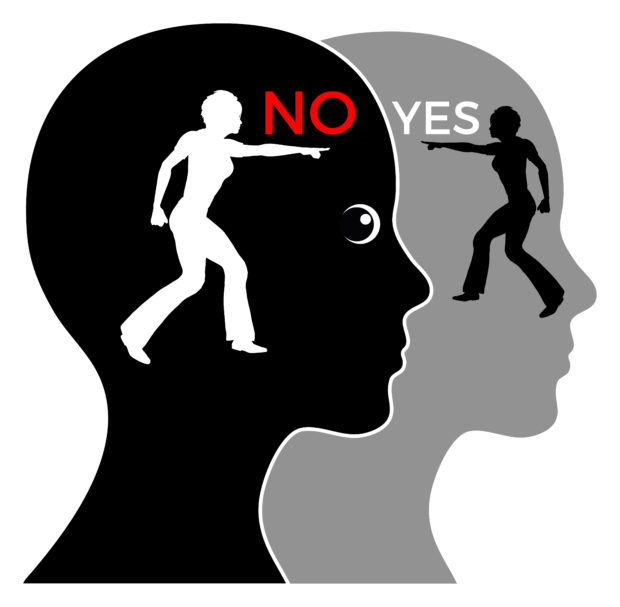Pistols At Dawn
I was talking to a friend of mine yesterday, and I noticed something interesting about her speech. She had always spoken like that, but I hadn’t talked to her in quite a while. Last time we spoke was before I had become interested in language, having read several books on linguistics and other interesting tricks of language, most notably books by Pinker, Lakoff, and Grinder/Bandler.
The thing I noticed now, that I didn’t notice before was her heavy use of indirect speech. For example, I would say “A,” and she would then think “Because of A, then B,” with “B” being something that didn’t sound like such a good thing. But because she didn’t want to (either consciously or unconsciously) blurt right out “B!” She would always hide it behind layers of presuppositions and vague references.
For example, she would mention wanting more money at work, and I would suggest asking her boss for a raise. Instead of saying the obvious “If I ask for a raise, he’ll say no, and think less of me for asking.”
Which is a common enough fear, and generally the immediate reaction of most people when thinking about asking for a raise. But instead of blurting that right out, she’d say something like:
“I’m not sure if I have the presence of mind right now to think of what would happen if I were to do that.”
Which sounds innocent enough, until you unpack that seemingly simple statement and see what she’s really saying:
She is assuming that “presence of mind,” (whatever that is) is something that is difficult to identify, as she’s not sure if she has it or not.
Something called “presence of mind,” is required to understand the result of a request for more money.
“If I were to do that,” is stated as a second conditional. A first conditional is an “if..then” statement using the present tense, which presumes it is something that is likely to occur.
If it rains, I will get wet.
If I spend my money, I won’t have any.
If I drive too fast, I may get a ticket.
While the second conditional, with the past tense, is used for things that we don’t expect will happen, or are impossible.
If I asked my boss for a raise, he would say no.
If I saw a UFO, I would run.
So in response to a suggestion to ask for more money, she hides her “no, I’m too afraid” behind about three layers of linguistic protection.
If you’ve ever listened to a politician speak, you can tell right away that there speech is usually filled with layers and layers of vague ambiguity, so nobody can ever pin them down on what they said, if things go wrong, and if things go right, they can claim they had something to do with it.
It’s no wonder the joke, “how do you tell a politician is lying – when his lips are moving,” is so funny.
In one of the aforementioned books, Pinker was talking about how in societies where they have a history of class distinction, where upper class people could legally kill lower class people, (or other upper class people if they situation warranted it) they have developed a very polite level of speech, which can exist hundreds of years after the threat of violence.
If you were talking to some guy that was carrying weapons, and by offending him you risked getting your head slice off, you’d quickly learn to speak politely. It doesn’t take long for such a society to develop polite language. The American South is one such example. If you said the wrong thing to the wrong person, he would demand “Satisfaction,” and you’d have a gunfight at twenty paces on your hands.
Those that study linguistics on a much deeper evolutionary level suggest that all indirect speech has its roots in ancient fears of immediate reprisals. It doesn’t sound dangerous in the least to ask your boss for a raise, at least not from the standpoint of physical violence, but nevertheless, those feelings of fear cause us to hide our real feelings beneath several layers of “politeness” and vague ambiguity.
There is a fascinating book called “Mean Genes,” which illustrates all the ways that our automatic impulses that helped us immensely in our evolutionary past can be a real pain in the you-know-what in modern society. Stuffing our face until we can’t move when we are in the presence of food is one example that you can see everywhere you look in modern western society.
In the past, the several thousand year ago past, that impulse was beneficial. People would go several days without food, and when they finally got some, all other concerns were put on the back burner, and it was time to eat until the food was gone.
Not so helpful when you pass by three McDonalds, two Dunkin Donuts and a Bakery on the way to work every morning.
Of course, the great hope of modern humankind is to rise above our evolutionary based fears, and the ability to use our rational, conscious minds to think our ways around those pesky impulses to plan our future, instead of letting our impulses plan it for us.
(Advertisement)
To find out exactly how to do this, click below:

Success with NLP





